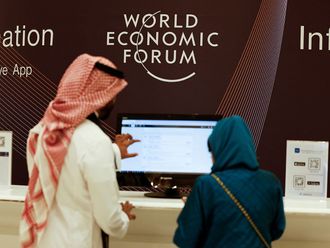
GCC countries have made significant strides in closing the gender gap, highlighting a broader societal recognition of the importance of empowering women economically, fostering diversity in the workplace, and harnessing the full potential of the entire population for sustainable development.
It’s encouraging to see how women across the GCC are transforming the region’s workforce. The participation of women in Saudi Arabia’s workforce, for example, reached 37 per cent in the first quarter of 2023, exceeding the country’s stated Vision 2030 participation goal more than seven years ahead of schedule.
Qatar and the UAE continue to lead the GCC region in women workforce participation, with 60 per cent of Qatari women and 53 per cent of Emirati women employed in the workforce, according to the latest World Bank estimates. Female workforce participation in these countries well outpaces the current global average of 47.4 per cent.
The World Economic Forum has stated that global gender equality is stalling, and it will take 131 years to close the gender gap. This proves that each organisation and nation’s commitment and progress should be an ongoing and evolving process, with a collective understanding that true progress involves not only numbers, but also the creation of an inclusive and supportive professional landscape for all.
Women in corporate leadership roles
One of the biggest challenges holding women back in today’s workforce revolves around gender stereotypes. A majority of women have revealed that unconscious biases in hiring, perceptions of women in leadership, and stereotypes of their roles in society are all creating barriers to women's advancement and equal pay.
The ‘double-burden’ syndrome, a term used to describe women balancing their workloads at the office and their domestic responsibilities, was identified as a major roadblock in increasing the number of women in leadership positions. This is particularly significant as research has shown that organizations undergo a tipping point in their journey toward gender equity, when women represent at least 30 per cent of the total workforce.
This effect is even more pronounced when women hold 30 per cent or more of an organization’s leadership roles.
In addition, lack of appropriate infrastructure such as women-only facilities, and an absence of pro-family public policies are further hindering women’s participation in the workforce. Overcoming these challenges is crucial to realising the many benefits of gender equality. For example, it has been estimated that increased female employment participation could increase GDP across the MENA region by 57 per cent, or as much as $2 trillion.
Bring in education into mix
When addressing the challenges of closing the gender gap, organisations must adopt a multi-faceted approach. For starters, implementing and enforcing diversity and inclusion policies is crucial, alongside educational campaigns to raise awareness about unconscious biases.
The introduction of mentorship and sponsorship programs will also provide vital support for women's career advancement, while flexible work arrangements and equal pay practices contribute to a more balanced workplace.
In short, what women must do is believe in themselves, embrace the potential, and never stop pursuing the dreams. The world of STEM (science, technology, engineering, mathematics) needs your unique perspectives, innovative ideas, and unwavering determination. Don't be discouraged by challenges, but see them as opportunities to learn and become even more remarkable.
Seek out mentors, build your network, and empower others as you climb. Together, we can shatter glass ceilings and create a world where women in STEM not only thrive but lead the way.









